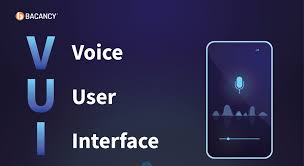
The way we interact with technology is evolving rapidly, and by 2025, voice technology is becoming one of the most natural and convenient ways to connect with the internet. Voice assistants like Siri, Alexa, and Google Assistant have already introduced millions to hands-free control, but the future holds even more exciting possibilities.
From smart homes to customer service, voice tech is poised to become a primary interface—changing how we search, shop, communicate, and control devices.
Let’s explore the rise of voice technology and why it’s shaping the next chapter of internet interaction.
1. What Is Voice Technology?
Voice technology refers to systems that understand and respond to human speech, enabling users to control devices and access information using natural language. Key components include:
- Automatic Speech Recognition (ASR) to convert spoken words into text.
- Natural Language Processing (NLP) to interpret meaning.
- Text-to-Speech (TTS) to respond in a human-like voice.
Advancements in AI and machine learning have greatly improved voice recognition accuracy and responsiveness.
2. Why Voice Tech Is Gaining Momentum
Several factors are driving the rapid adoption of voice technology:
- Hands-free convenience allows multitasking and accessibility for all users.
- Faster interactions compared to typing or tapping.
- Improved accuracy reduces frustration and expands use cases.
- Integration with smart devices from phones and TVs to cars and appliances.
Voice tech enhances user experience by making interactions more intuitive.
3. Everyday Applications of Voice Tech
By 2025, voice interfaces are common in:
- Smart homes: controlling lights, thermostats, security, and entertainment.
- Search engines: performing web searches with voice queries.
- Customer support: AI-powered voice bots handling inquiries and transactions.
- Healthcare: voice commands for patient monitoring and hands-free documentation.
- Automotive: voice-activated controls for navigation, music, and communication.
These applications are making technology more accessible and efficient.
4. The Impact on Businesses
Voice technology is transforming how businesses engage with customers:
- Creating voice-optimized content for search and marketing.
- Offering personalized shopping experiences via voice assistants.
- Streamlining customer service with 24/7 voice bots.
- Enhancing data collection through natural conversations.
Companies investing in voice tech gain competitive advantages and deeper customer insights.
5. Challenges and Considerations
Despite its growth, voice technology faces hurdles:
- Privacy concerns around always-on listening devices.
- Security risks such as voice spoofing and unauthorized access.
- Language and accent diversity requiring constant improvement.
- Context understanding to handle complex or ambiguous requests.
Ongoing innovation and regulation are key to addressing these issues.
6. The Future of Voice as the Internet Interface
The future points to voice as a central mode of internet interaction:
- Multimodal interfaces combining voice with visuals and gestures.
- More natural, conversational AI that understands context and emotion.
- Voice in augmented and virtual reality, creating immersive experiences.
- Expansion into new languages and dialects for global accessibility.
Voice technology will make accessing the internet as simple as talking to a friend.
Final Thoughts
Voice technology is reshaping the way we connect with the digital world—making it faster, easier, and more natural. As AI advances, voice will become a dominant interface, transforming how we live, work, and play online.
Embracing voice tech today prepares us for a hands-free, voice-first future where the internet listens—and responds—to us like never before.
